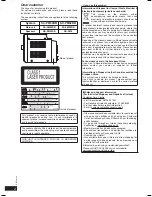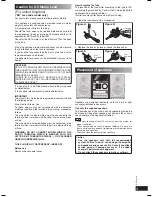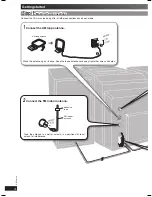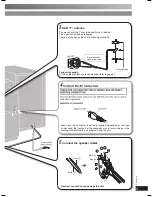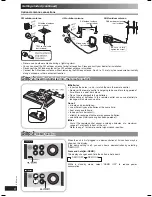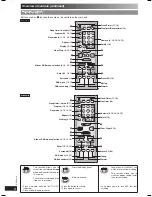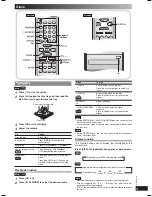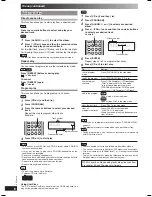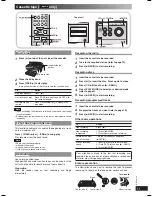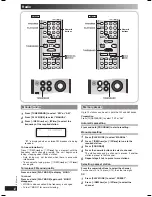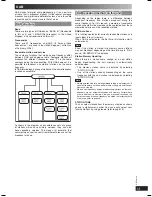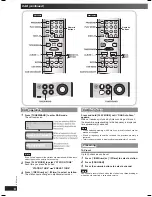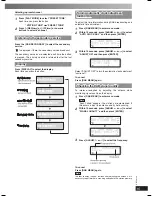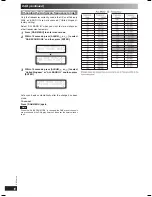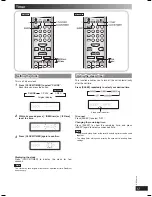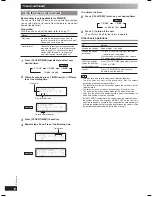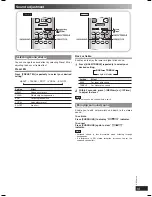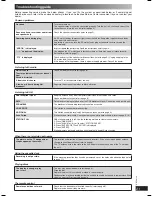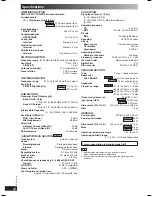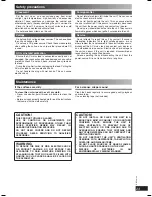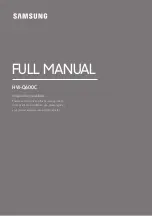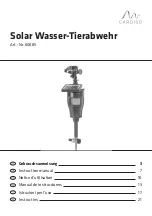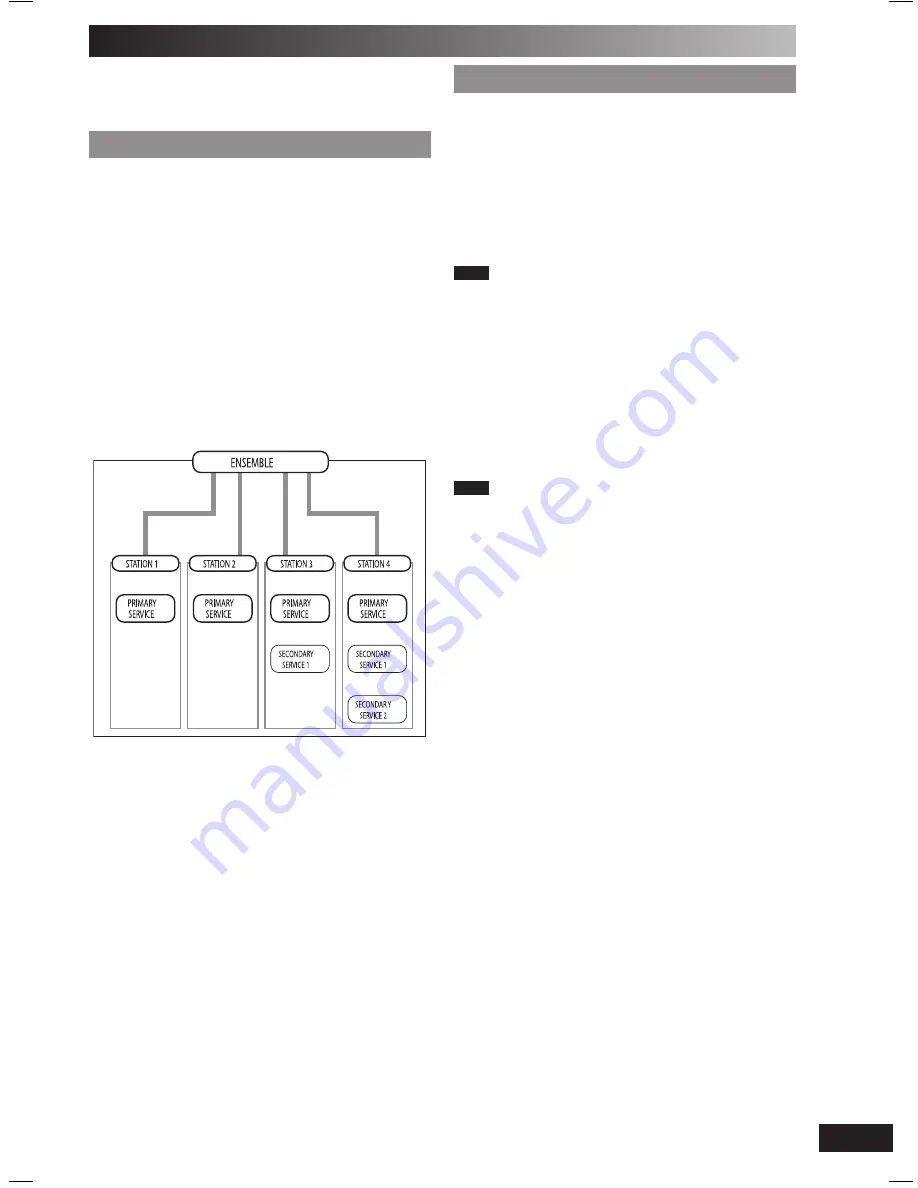
RQTV0123
13
DAB
DAB stands for digital audio broadcasting. It is a new form
of radio that is broadcast digitally. Unlike regular analogue
broadcasting, digital radio deteriorates less, and is thus able
to provide quality sound close to that of a disc.
DAB structure
DAB structure
Band
There are two types of DAB bands, “BAND
III
” (Receivable
in this unit) and “L BAND”(Not broadcast in the United
Kingdom, and not receivable on this unit).
Frequencies
There are 41 frequencies on BAND
III
. Among those
frequencies, 7 are used in the United Kingdom ( current as
of February, 2006).
Ensemble, station and service
The number of stations that make up one frequency differ
between DAB and analogue radio. Analogue stations all
broadcast on different frequencies, even if it is the same
company doing the broadcasting. With DAB however, it is
possible to broadcast a number of stations on the same
frequency.
In DAB terminology, a group of stations on the same frequency
is called an ensemble.
As shown in the diagram, an ensemble consists of a group
of stations which have primary services, they can also
have secondary services. This means, for example, that
commentary on sports events from different areas can all be
broadcast at once.
DAB reception method on this unit
DAB reception method on this unit
Depending on the region there is a difference between
broadcast frequency and stations broadcast along the
same frequency. For this reason, a memory of receivable
stations should fi rst be created and then selected from those
memorized stations as the reception method.
DAB Auto Scan
This function searches for currently receivable stations and
inputs them into unit memory.
When DAB is selected for the fi rst time, this function starts
automatically.
Note
Even if the station is stored into memory, some stations
may not broadcast depending on the time of day etc. If this
occurs,”NO SERVICE” is displayed.
Station Memory Updating
When there is a station name change, or a new station
begins broadcasting, the unit memory is automatically
updated when:
• The previous station name is displayed by selecting
“STATION TUNE”.
• One of the stations already broadcasting on the same
frequency with the new station is displayed by selecting
“STATION TUNE”.
Note
• Deleting stations that are no longer broadcasting is not automatic. If
you want to delete a station, perform Auto scan again and the new
memory is created.
• When a new frequency begins broadcasting, stations on that new
frequency are not automatically added to memory. Perform Auto
scan to add them to memory. Also, you may need to change the
Auto scan range if the new frequency is outside the factory set Auto
scan range (refer to page 16).
STATION TUNE
You can select stations from the memory created as shown
above in alphanumeric order. You can easily select your
favorite stations by using presets
(refer to page 14).
PM32-33DB_EB_En.indd 13
PM32-33DB_EB_En.indd 13
3/1/06 12:12:27 PM
3/1/06 12:12:27 PM


